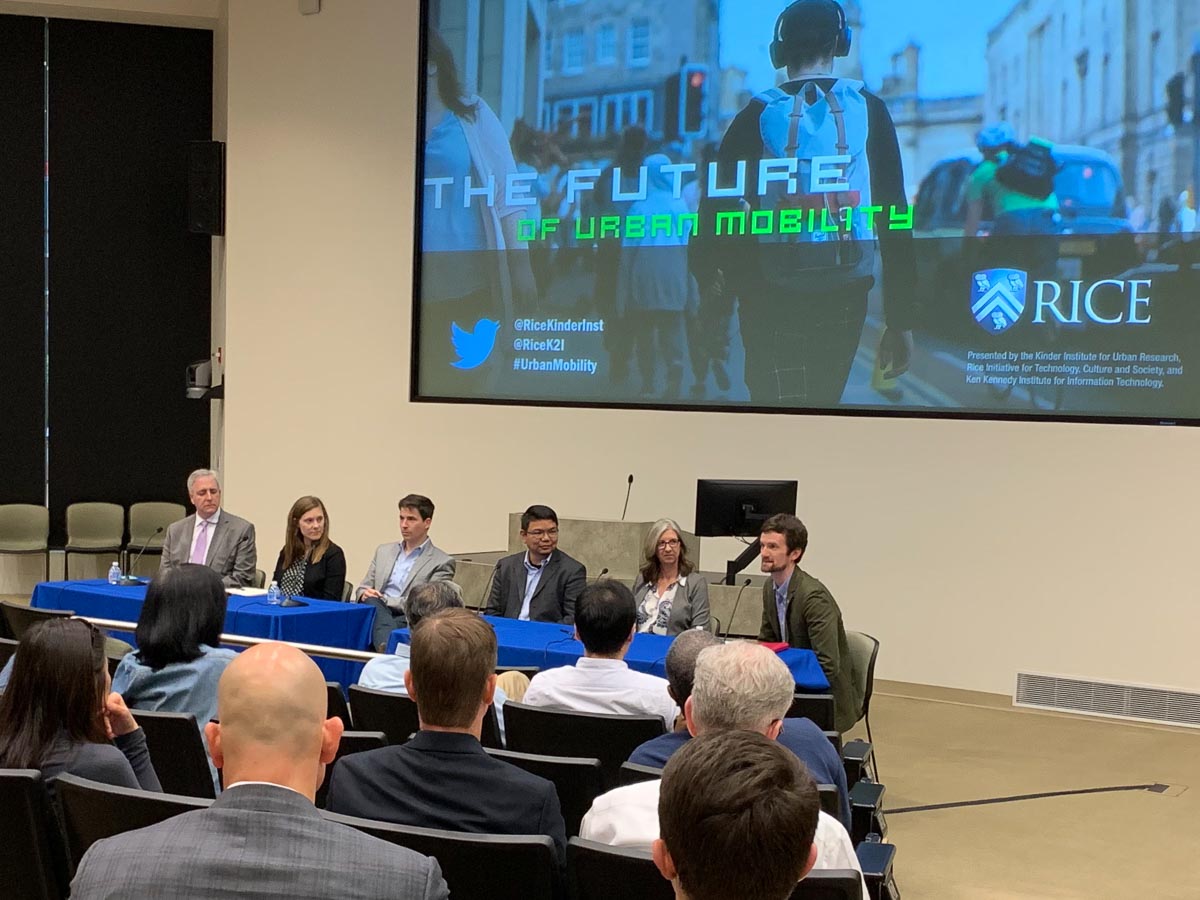The Kinder Institute for Urban Research, Ken Kennedy Institute for Technology Information and the Rice Initiative in Technology, Culture and Society hosted a panel of transportation experts from around the country to speak on the role of technology in urban mobility.
The panel included Anne Brown, assistant professor of planning, public policy, and management at the University of Oregon, Ginger Goodin, Regents fellow and senior research engineer at the Texas A&M Transportation Institute, Benjamin de la Pena, chief of strategy and innovation at the Seattle Department of Transportation, Robert Puentes, the president and CEO of Eno Center for Transportation, and Carter Stern, public policy manager for Lyft.
Kyle Shelton, Kinder Institute's director of strategic partnerships, moderated the panel and led the conversation towards addressing the goals for implementing new technology, how new technology both negatively and positively shapes the future of transportation and how technology must be used to create a better future for cities.
The entire panel seemed to agree that city leaders and residents must first determine what kind of city they wish to build before they turn their focus towards technology. "You have to frame the issue correctly first rather than diving headfirst into autonomous vehicles, or rideshares, or scooters, or bikes, or whatever the new technology of the day may be," Stern said.
But the use of technology as a way to measure the success or failure of a goal is also critical, Brown noted. "Cities defining goals is the most important first and foremost, but then using performance metrics and data to actually ensure that we're meeting those goals, and using technology as a means to an end, rather than an end to itself," Brown said.
An example de la Pena noted was the introduction of horseless carriages (what automobiles were first called) in the early 1900s as a new technology of the time that solved the more than 100,000 pounds of horse manure being cleaned from the streets in New York City a week. At the time, this technology made people afraid of the changes, de la Pena said.
While at the time, this technological change positively affected the environment by keeping the horse manure off the streets, those same technologies are negatively affecting the health of people now. "There is a very strong correlation to the longer you spend driving alone with your mental health," de la Pena said. De la Pena noted a strong correlation between time spent driving alone and mental health, citing how “these systems including transportation are making us less social and therefore increasing our stress and risk." Furthermore, Stern notes, the health of the Earth is at risk due to the emissions from automobiles — the same technology that once cleared the horse manure in the 1900s.
There's no doubt that the issues in transportation and the role vehicle emissions take on the environment are tied together. Solving these issues will require collaboration between both public and private entities. Regrettably, the panel said, the partnerships are developing, but there's little time to "fail fast," according to Goodin.
"In the startup world, there's the term fail fast, where you can see if your products are going to work and you can pivot," Goodin said. "That doesn't always work well in a public sector situation, because we have politics involved and people want to know, what are you spending your money on? [Failing fast] is wasting public money."
Technology has the potential of forming these partnerships in a more efficient way, according to Puentes. "All of these are different agencies. It's all supposed to be seamless and integrated, but we do a terrible job at doing that in this country," he said. "Part of my hope is that the technology is actually going to start to link these up because it starts to force those conversations."
Conversely, de la Pena noted there are things to be learned from each other saying, "There are places where government could work a little faster or, from my point of view, the way private sector — particularly tech-private sector — approaches things that governments could learn from. One example is human-centered design." He explained that private sector companies focus their products on the customers in order to retain them. He argued, public officials need to take on the same responsibility when planning transportation systems.
"Ultimately, we have to decide what kind of city we want to be, right," de la Pena said. "And then technology has to adapt to that, because we've done it the other way around, where the technology decided what the shape of the city was going to be, but that is absolutely essential to then deciding what has priority and what has value."

